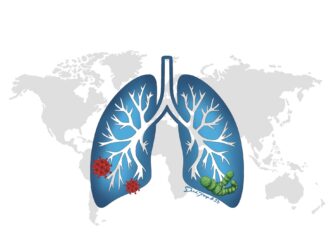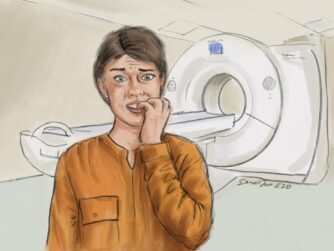P. David Gillett – Executive Producer
For many years my wife and I had wills because it was required for my work in the Air Force. We first learned about living wills and advance directives later in my 34-year career and so we put one in place. Neither of us wanted to be maintained in a “vegetative state” which we discussed in detail. In December of 2016 we updated our wills and the advance directive because many things had changed in our lives. I had retired from the Air Force; our children had graduated from college and were on their own. We had no thought that how the Advance Directive would be used…we considered it to be a strictly routine document.
In the Winter of 2017, my wife developed a severe cough and shortness of breath. None of the usual treatments her doctor prescribed worked and her pulmonary specialist ordered a lung biopsy. She was admitted to the hospital on April first because of concerns with her low oxygen levels.
Her condition steadily deteriorated and nothing the doctors did helped. She and I discussed the Advance Directive and she was certain that it expressed her wishes. She said she did not want a ventilator. She was in “step down” ICU when they put a “Do Not Resuscitate” or DNR order in her chart. That was a scary step. On a personal level, I was not entirely sure how to talk to my wife about it. I was terrified. I knew what she wanted, to get better, go home. But we were realizing that that goal was not in the cards.
One evening, her oxygen levels fell dramatically. The doctor came in and said if we did not ventilate her, she would die that night. I asked her again what she wanted, and she agreed to the ventilator for the time being. Her condition was maintained but she never improved. They put her in an induced coma and the doctors told me that they did not think she would recover.
I sent for my daughter and son and I printed out the advance directive for them because I knew hard decisions were near at hand. The doctor and I went over the options, which amounted to: 1) Keeping her alive in hopes that someone would donate lungs. This process would take months and it was uncertain whether she would be a priority as a 60+ year-old woman. 2) Release her from the ventilator and allow natural death.
Our kids had read her Advance Directive and could see for themselves that she did not want option 1. My wife was unable to participate in this decision because of her condition. As a family we decided together to honor her wishes and release her from the ventilator.
We dressed her in her favorite dress and we each said goodbye to her. The doctors removed the ventilator and she died 2 hours later, 30 days after she was admitted to the hospital.
I still agonize over some of the decisions I had to make. Everything seemed to happen so quickly and there was no time to ponder. I am grateful that we had the advance directive in place so that my family and I could be of one mind as to how to honor her wishes when she couldn’t speak for herself. Because of the advance directive we had a clear understanding of her desires. We miss her terribly and she will always be part of our lives.








